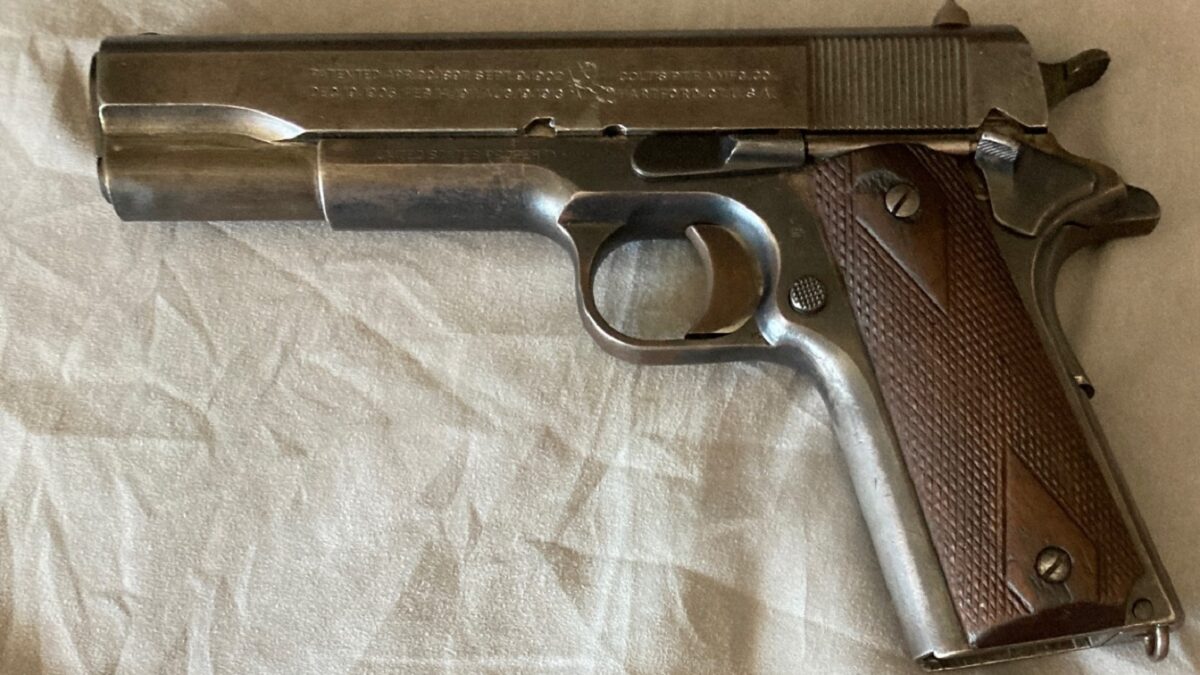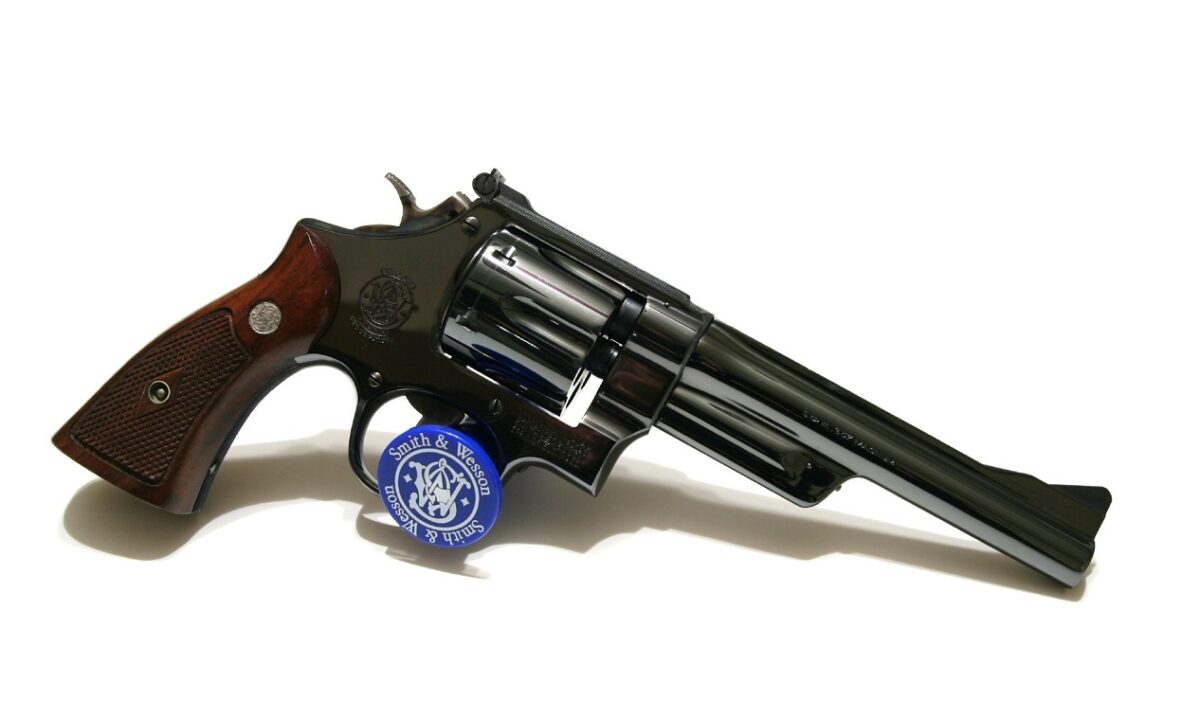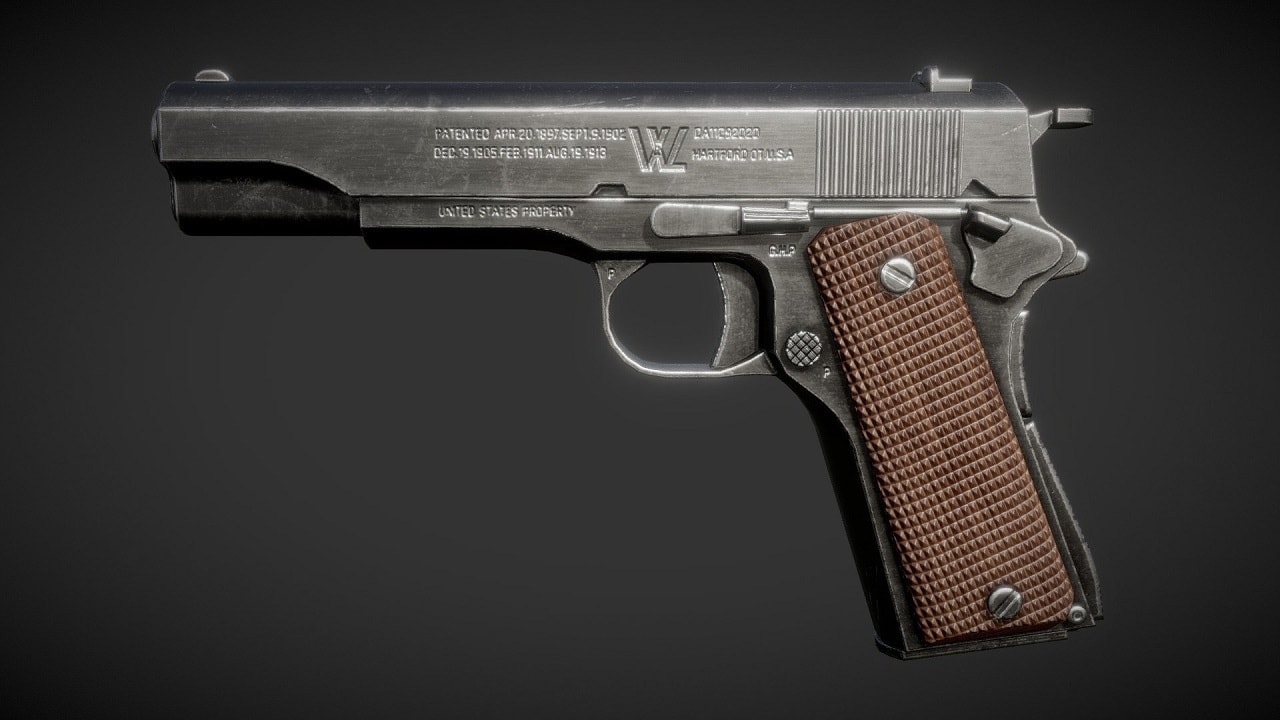The illustrious life of General George Smith Patton Jr. is replete with memorable quotes. Some of them are even repeatable in polite company.
One of Patton’s cleaner quotes regarded the M1 Garand battle rifle, wherein he referred to the weapon as “the greatest battle implement ever devised.”
Thing is, the good general, being the senior officer that he was, never actually had to lug an M1 Garand in the field. RHIP (“Rank Has Its Privileges”). But that didn’t mean Old Blood and Guts didn’t pack his fair share of firearms from his lieutenancy to his generalship.
Without further ado, let’s take a look at the firearms fielded by this famous field general. An excellent source of information on the topic is the article “George S. Patton: Guns That Made Him Great,” initially penned by Whit Collins for the August 1971 issue of Guns & Ammo Magazine, and republished in March 2018.
M1911 .45 ACP
This is arguably the most legendary military sidearm of the modern era, as well as the most powerful handgun ever to be made standard-issue to a nation’s military forces. Indeed, more superlatives have been written about this gun than you can shake a stick at, yet General Patton disliked it. Quoth Mr. Collins:
“Patton had, of course, been issued a Model 1911 .45 Government Model Automatic Pistol. During his border patrol service, he stoned or filed the hammer notch down so ‘fine’ that it reportedly went off when he stamped his foot, grazing his thigh. Instead of discontinuing the practice of honing down actions, Patton rather characteristically blamed the automatic pistol itself.
“It seems hard to believe that a gun handler of Patton’s class would alter any gun to such an unsafe state. However, the fact remains that he was known to prefer powerful revolvers to any semiautomatic pistol, all his life.”

M1911 fired at the range. Image Credit: 19FortyFive.
Colt Single Action Army (SAA) “Peacemaker” .45 Long Colt
On to the handguns Patton actually liked — the “powerful revolvers” in question. To pick up where the previous Collins quote left off, Patton “soon ordered a brand new Colt Single Action from the Shelton Payne Arms Company of El Paso, Texas. He thereafter carried it in the Western fashion of a five shooter, as noted. In that period, many U.S. cavalrymen did the same, as the gun was still accepted as a substitute standard personal arm.”
And who could blame then-Lt. Patton and his fellow cavalrymen for their choice of weapon? The “Peacemaker” was battle-proven as the official U.S. Army sidearm from 1873 to 1892, and it continued on unofficially through the Spanish-American War. Patton first wielded the SAA in combat during General John “Black Jack” Pershing’s Pancho Villa Expedition of 1916.
The gun eventually ended up as one of Gen. Patton’s two famous ivory-handled revolvers. And just to clear up any confusion on the material composition of the good general’s revolver grips, let’s get it straight from the proverbial horse’s mouth: ““Son, only a pimp in a Louisiana whorehouse carries pearl-handled revolvers. These are ivory.”
Smith & Wesson Model 27 .357 Magnum
This was the other half of the ivory-handled wheelgun pair. Hey, if the original .357 Magnum was good enough for the founding director of the FBI, then it was good enough for General Patton, right?
Whit Collins once again provides some insight: “Although popularly remembered as the ‘two-gun’ General, Patton actually seldom wore both of his ‘carrying guns’ together.
“Of the two of them, aides and relatives have said that the .45 Colt was the one Patton stressed for everyday carry, while the .357 was to be the ‘killing gun,’ in his words, if the battlefield situation ever demanded it.”
Nowadays, the Model 27 is part of Smith & Wesson’s N-frame series, which also includes most of the manufacturer’s large-bore revolvers such as the S&W Model 29 .44 Magnum and the M57 .41 Magnum. For comparison, the Smith Model 19 .357 Magnum is part of the medium-sized K-frame series, and the sweet-shooting Model 686 in the same caliber is in the medium-large L-frame series.

Smith & Wesson Model 27.
Colt and Remington .32 and .380 ACP Autos
Going back to what I said earlier about Patton distrusting semiauto pistols, he apparently made an exception for these pocket pistols. To quote Whit Collins one more time, “Although he liked big revolvers, he was of the opinion that .32 and .380 autos were more effective than similar revolvers with the ammunition then available.” If the Smith M27 was the General’s “killing” gun, these pocket autos were his “insurance” guns.
For starters, there was the Remington Model 51 .380 ACP, which many firearms experts — particularly Leroy Thompson — deem to be one of the best-handling pistols ever designed. Not surprisingly, the flamboyant General Patton chose to adorn his with ebony grips with ivory stars inlaid into them.
Next there was a Colt Model M General Officers Pistol AKA the Colt Model 1903/1908 Pocket Hammerless, in .380 ACP, which was purchased by the U.S. government for issue, with a special general officer’s pistol belt, to general officers in 1944. Bearing three- and later four-star grips, this was the gun one seen consistently in pictures of Patton from 1944 until his untimely death in 1945.
Last but not least, Old Blood and Guts had a .32 Colt autopistol, made concurrently with the .380 from the same manufacturer, carried in a hideaway holster. (Yes, Patton did also have a Colt Detective Special .38 snubnose revolver, but it was rarely seen during WWII.)
Where Are They Now?
The two ivory-handled revolvers are now on display with the Patton Collection of the West Point Museum. I have not been able to ascertain the whereabouts of his pocket autopistols, so if any of our dear readers happen to have this info, please let us know in the Comments section!
Christian D. Orr has 34 years of shooting experience, starting at the tender age of 14. His marksmanship accomplishments include: the Air Force Small Arms Ribbon w/one device (for M16A2 rifle and M9 pistol); Pistol Expert Ratings from U.S. Customs & Border Protection (CBP), Immigration & Customs Enforcement (ICE), and the Federal Law Enforcement Training Center (FLETC) Criminal Investigator Training Program (CITP); multiple medals and trophies via the Glock Sport Shooting Foundation (GSSF) and the Nevada Police & Fires Games (NPAF). Chris has been an NRA Certified Basic Pistol Instructor since 2011.

